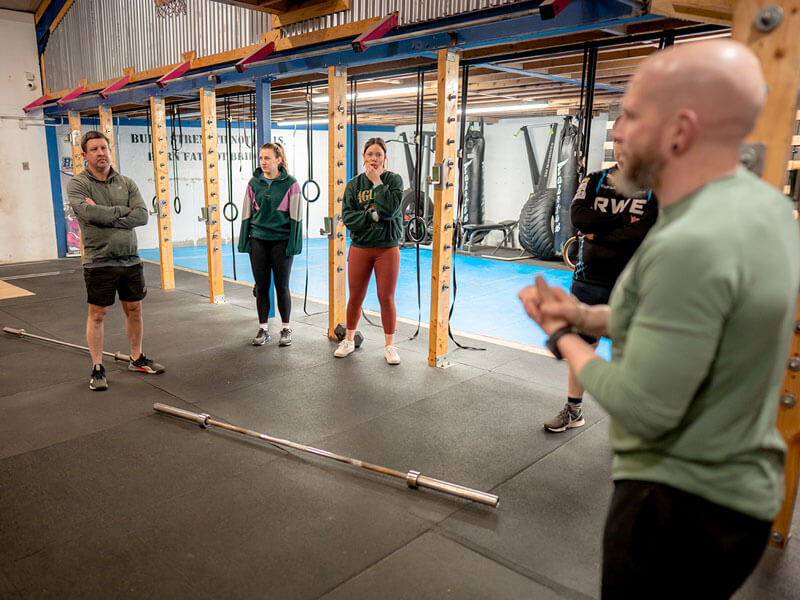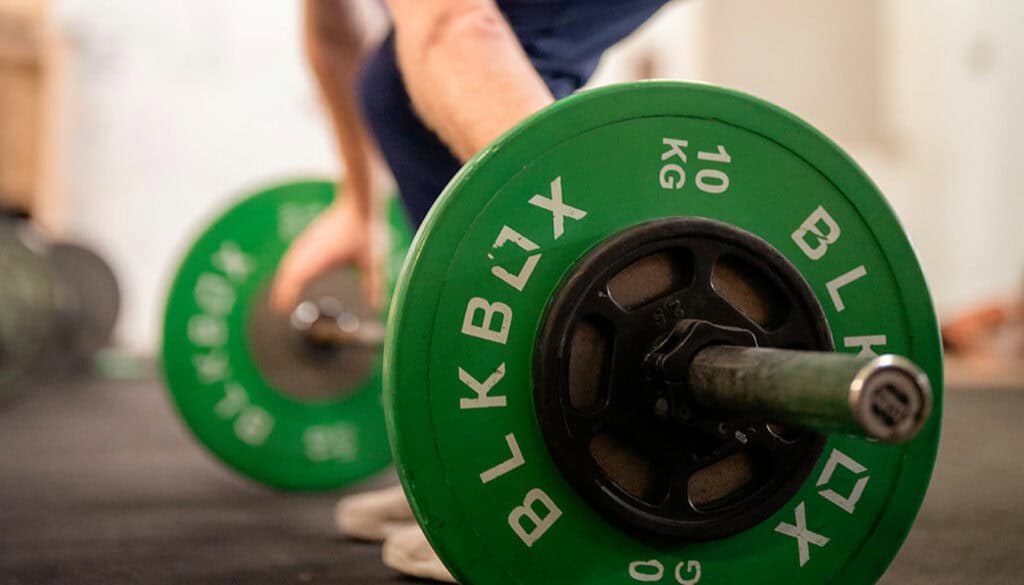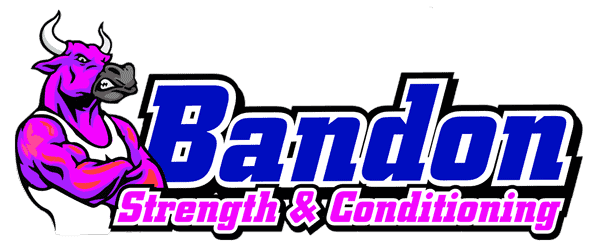Ever thought about improving your fitness beyond the gym basics? What is strength and conditioning, and how could it revolutionise your workouts? It’s not just for athletes. Imagine these methods bringing health and vitality into your daily routine.
Strength and conditioning is rich in sports science, aiming to improve how you move. It’s backed by solid research, focusing on exercise science. This approach isn’t just for sportspeople. It helps everyone, young or old, boost their daily life and avoid injuries.
Your aim might be to get faster, stronger, or just move better. Knowing strength and conditioning can change your life. We will explore how it goes beyond gym efforts. It’s about enhancing every part of your life.
Key Takeaways
- Strength and conditioning extends beyond typical gym workouts and is relevant to individuals from all walks of life.
- Foundational to this approach are evidence-based methods that take inspiration from sports science to enhance daily functional movement.
- Goals include not only improved sport performance but injury prevention and general health improvement for an enhanced quality of life.
- Implementing strength and conditioning exercises should be seen as a holistic and inclusive practice, suitable for different age groups and fitness levels.
- The journey into strength and conditioning begins with understanding its principles and recognising its value in your personal fitness routine.
Exploring the Definition of Strength and Conditioning
Strength and conditioning is about improving physical abilities using science. It combines various methods to improve movement and athleticism.
The Intersection of Sports Science and Functional Movement
Sports science is key in understanding strength and conditioning. It ensures exercises improve our daily lives and sporting performance. This makes activities strengthen muscles and benefit daily movements.
Going Beyond Traditional Weightlifting
Strength training goes past just weightlifting. It includes plyometrics, sprints, and Olympic lifts. Mobility and endurance work are also parts of the programme.
This blend leads to a complete strength and conditioning plan. It helps everyone enhance their physical limits safely.
Principles and Importance of Strength and Conditioning

The principles of strength and conditioning are key for a good training plan. They help athletes perform better and prevent injuries. By using these guidelines, your workouts will be safer and more effective.
The importance of strength and conditioning is huge. It’s not just about being better in sports. It’s also about staying active and healthy for a long time.
Injury prevention is really important in strength and conditioning. It’s about doing exercises that help you know where your body is and how it moves. This can really cut down on getting hurt.
A good strength and conditioning program improves many things – how you move, your strength, your game strategy, and even your mindset. This makes you better overall, not just in physical aspects.
“A strength and conditioning programme is essential in reducing the risk of injury, enhancing movement efficiency, and elevating an athlete’s performance.”
Let’s look at the main principles of a great strength and conditioning plan:
- Individualisation: Making plans that meet each person’s needs and goals
- Specificity: Making sure the training fits the sport or activity
- Progressive overload: Slowly making training harder to get better
- Variability: Using different exercises for different muscles
- Recovery: Taking breaks and eating right for the best performance
| Principle | Application | Benefit |
|---|---|---|
| Individualisation | Assessing skill levels and personalising regimens | Maximises engagement and minimises injury risk |
| Specificity | Focused training components based on the sport | Boosts performance in targeted activities |
| Progressive Overload | Methodically intensifying training difficulty | Promotes long-term athletic development |
| Variability | Including a variety of exercises | Reduces boredom and overtraining |
| Recovery | Rest and nutritional strategies | Improves resilience and preparedness for subsequent sessions |
When these principles are followed together, both athletes and casual exercisers benefit a lot. This shows the importance of strength and conditioning programs. They help not just with sports, but also with staying healthy and active.
Benefits of Engaging in Strength and Conditioning
Strength and conditioning offer great benefits for both sport and everyday life. It boosts performance and helps avoid injuries. By doing a variety of exercises, people improve their health and the quality of their lives.
Injury Prevention and Proprioception
Injury prevention is a key benefit of strength and conditioning. A well-planned routine strengthens the body. This reduces the risk of getting hurt in sports or daily activities. Proprioception, or understanding body position, improves as well. This leads to better balance and coordination.
Optimising Physical Performance Across Disciplines
Regular strength and conditioning boost physical performance. Athletes find it enhances endurance, power, speed, and agility. But it’s not just for athletes. Everyone gains more energy and becomes more efficient in daily activities.
Contribution to General Health and Wellbeing
Strength and conditioning also benefit overall health. These activities boost heart health and make bones stronger. They even improve posture. Moreover, they can lift your mood and help your mental health. This shows how these exercises support a whole-body health approach.
| Aspect of Health | Benefits of Strength and Conditioning |
|---|---|
| Cardiovascular System | Improved heart health and stamina through cardio-intensive exercises |
| Musculoskeletal System | Increased muscle mass and joint stability from varied resistance training |
| Skeletal System | Enhanced bone density and a reduced risk of osteoporosis |
| Mental Health | Boost in mood and stress reduction due to endorphin release |
| Metabolic Health | Higher metabolic rate leading to more efficient calorie burn and weight control |
The Role of a Strength and Conditioning Coach

The role of strength and conditioning coach is key for athletic improvement. It includes many tasks aimed at boosting people’s skills. These experts are committed to creating custom plans. They help athletes and non-athletes perform better over time.
These coaches combine deep knowledge and practical skills. They help athletes get stronger, last longer, and move better. They know a lot about the human body. This lets them track and improve athletes’ performances towards their goals.
Strength and conditioning coaches also help non-athletes stay healthy. They are vital in making movement better. This leads to a life full of energy and strength.
“Our dedication to individualised training programmes is what sets us apart. We take pride in enhancing the athleticism in all our clients, ensuring that each step taken is a stride towards peak movement quality.”
| Objective | Technique | Outcome |
|---|---|---|
| Maximising Strength | Olympic weightlifting, Plyometrics | Increased muscle mass and power |
| Improving Mobility | Dynamic stretching, Functional movements | Greater range of motion and movement efficiency |
| Conditioning for Endurance | High-intensity interval training (HIIT), Circuit training | Better cardiovascular health and stamina |
| Enhancing Proprioception | Balance exercises, Agility drills | Improved body awareness and coordination |
The role of strength and conditioning coach is complex. It shows how tailored programmes are crucial. They always look for ways to improve movement. This leads to better quality of life.
Designing Your Own Strength and Conditioning Programme
Creating strength and conditioning programs needs a good understanding of personal goals, abilities, and injury history. It’s vital that these fitness plans match an individual’s unique requirements. Personalised programme creation is central to this, helping exercisers safely reach their peak potential.
Assessment and Personalised Programme Creation
Starting a workout plan begins with a detailed assessment to make a personalised programme that meets your goals. This is true whether you aim to boost athletic ability, enhance health, or recover from injuries. This assessment provides the program’s foundation.
Assessment Areas:
- Fitness and exercise history
- Past and present injury records
- Current physical capabilities
- Long-term and short-term fitness goals
From this assessment, a tailored workout plan comes to life. It includes exercises chosen based on the evaluation results. The plan is reviewed regularly to ensure it remains effective and suitable.
Balance of Different Exercise Types
A strength and conditioning program must have a balance of different exercise types. This approach aims to improve all areas of fitness like core stability, aerobic capacity, power, and flexibility.
| Exercise Category | Purpose | Sample Activities |
|---|---|---|
| Core Stability | Enhance balance and provide injury resilience | Planks, bird dogs, and stability ball exercises |
| Endurance Training | Improve cardiovascular health and stamina | Running, cycling, and rowing |
| Plyometrics | Boost explosive strength and speed | Box jumps, jump squats, and burpees |
| Mobility Exercises | Increase flexibility and joint range of motion | Dynamic stretches, yoga poses, and foam rolling |
Mixing different exercise types leads to a comprehensive training experience. This not only helps achieve specific fitness goals but also supports a healthier, balanced lifestyle.
Strength and Conditioning: Not Just for Athletes

The belief that strength and conditioning is only for top athletes is fading. Today, strength and conditioning for all reaches a wide range of people. It shows the great benefits these exercises offer for many activities and ways of life. This includes recreational fitness fans to people focused on injury rehabilitation.
Recreational sport lovers use strength and conditioning to get better at their sports. It also helps avoid injuries and lets them enjoy their sports more. Gentle training routines make them stronger, more enduring, and agile. For those recovering from injuries, strength and conditioning are key in injury rehabilitation. It helps them regain confidence and move normally in their daily life.
Strength and conditioning go beyond the gym, showing its value for everyone, no matter their sport level.
These practices help both young and older people move better in everyday life. Activities like gardening, walking, or DIY jobs become easier and safer.
| Demographic | Functional Benefits | Recommended Activities |
|---|---|---|
| Youth Athletes | Enhanced motor skills, Injury risk reduction | Age-appropriate resistance training, agility exercises |
| Recreational Fitness Enthusiasts | Improved performance, Increased satisfaction | Circuit training, Core strengthening workouts |
| Individuals Undergoing Injury Rehabilitation | Restored mobility, Accelerated recovery | Low-impact resistance exercises, Controlled flexibility training |
| Older Populations | Better balance, Enhanced daily autonomy | Balance training, Functional movement exercises |
Strength and conditioning for all is accessible, flexible, and hugely beneficial. It doesn’t just improve sport performance; it enhances life quality through better fitness and health. The old view is wrong; strength and conditioning truly are for everyone.
Key Principles of Strength and Conditioning Exercise

Getting fit involves targeted exercises. To shine in strength and conditioning, focusing on key principles is crucial. These rules boost muscle strength, improve daily movements, and sports performance.
Developing Core Stability and Endurance
A strong core is essential for a mighty body. It supports all muscle groups. Core stability exercises lay the foundation for strength and endurance. They prepare you for tough and daily tasks, reducing injury risk.
Integrating Plyometrics and Mobility Work
Adding plyometrics to your exercises is key for fitness. They help develop quick and strong muscle movements. Mobility work is also important. It helps joints move fully. Together, they improve athletic and everyday performance.
- Core stability is vital for lower back health and athletic performance.
- Endurance training increases one’s ability to sustain activities for longer periods.
- Plyometrics contribute to explosive power, vital for quick, reactive movements.
- Mobility work aids in reducing the risk of injury by improving flexibility and joint health.
Comparing Strength and Conditioning Coaches with Personal Trainers
When you’re picking someone to guide your fitness path, it’s key to know the difference between a strength and conditioning coach and a personal trainer. These experts may seem similar, but they focus on very different approaches when it comes to creating individualised plans and training methods. We’ll dive into what sets them apart and how each can boost your fitness or sports goals.
Strength and Conditioning Coaches: These coaches focus on making athletes better using science-backed plans. They craft custom training programs that suit not just the sport, but also the athlete’s body and needs.
- Focused on long-term athlete development
- Collaborative work with healthcare providers for holistic management
- Advanced understanding of sports biomechanics
- Proficient in performance analysis and injury prevention strategies
Personal Trainers: They’re here for a broad audience, aiming to help you meet general health and fitness goals. This could mean losing weight, getting toned, or just feeling fitter.
- Flexibility to work with a wide range of clients
- Major focus on motivation and accountability for diverse fitness goals
- Typically operate in fitness centres or private studios
- Versatility in adapting workouts to immediate client preferences
A strength and conditioning coach takes a detailed, planned approach. They create evolving, individualised plans that match sports needs and competition schedules.
On the flip side, personal trainers are all about flexibility. They help those aiming for better health and fitness, regardless of sports ambitions.
In summary, both roles greatly help with fitness goals, but their methods and focuses differ. Understanding these can help you pick the right fitness mentor, whether you’re after health improvements or sports success.
Summary
Exploring strength and conditioning shows us more than just working out. It’s a deep science aiming to change how we get fit. It’s not just about looking good. It improves how we move with precise exercises and principles. This makes our bodies stronger for things like running, lifting, or everyday tasks.
Strength and conditioning coaches play a big role. They create personal fitness plans for goals. These experts know how to help both top athletes and beginners. With their help, achieving great health becomes possible. This leads to success in fitness goals for all.
Making strength and conditioning a part of your life is a smart choice. It brings many benefits, like stronger muscles and better movement in daily life. This approach to health is all about the right strategy. It can change the game for anyone wanting to boost their fitness and reach top shape. Strength and conditioning is key for a strong, flexible body and lasting health.



